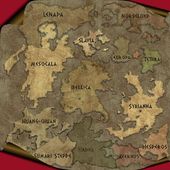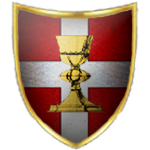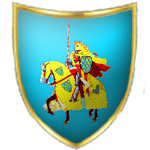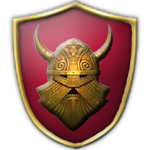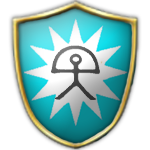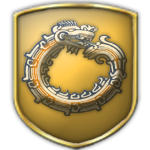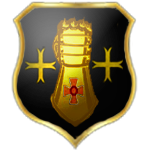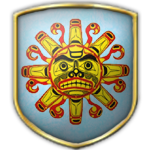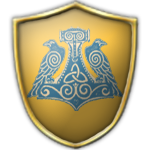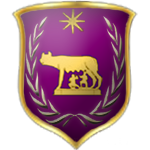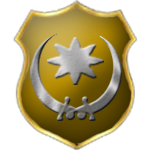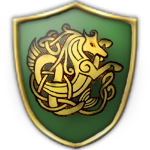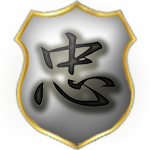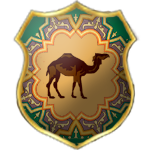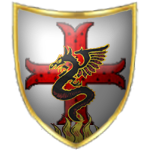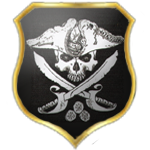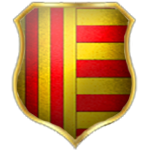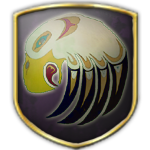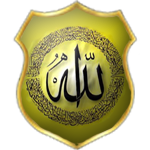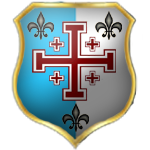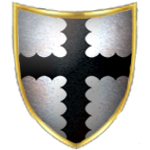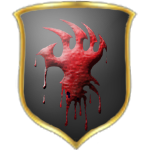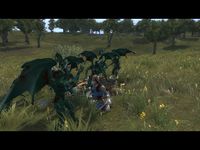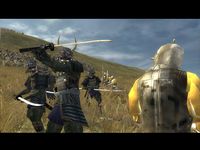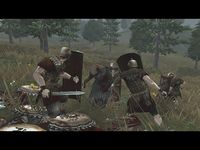Difference between revisions of "THERA, Legacy of the Great Torment"
m (Removed category "TWC Hosted Modifications"; Quick-adding category "M2TW Mods (Hosted)" (using HotCat)) |
m (→The Concept) |
||
| (12 intermediate revisions by 3 users not shown) | |||
| Line 1: | Line 1: | ||
[[Image:Thera Title.png|center|]] | [[Image:Thera Title.png|center|]] | ||
| − | {| | + | {{Mod Information Table |
| − | + | |Platform= M2TW [[Kingdoms]] | |
| − | + | |Mod Type=Total conversion, Fantasy | |
| − | | | + | |Parent= |
| − | + | |Era=The timeframe of your mod! | |
| − | + | |Mod Leader=[http://www.twcenter.net/forums/member.php?u=26684 TheFirstONeill] [http://www.twcenter.net/forums/member.php?u=27290 Caki] [http://www.twcenter.net/forums/member.php?u=2839 Aduelist] [http://www.twcenter.net/forums/member.php?u=10808 Tzar][http://www.twcenter.net/forums/member.php?u=35400 Eothese] | |
| − | | | + | |Release Status=Released |
| − | | | + | |Mod Foldered=Yes |
| − | + | |Forum=[http://www.twcenter.net/forums/forumdisplay.php?f=991 Here] | |
| − | + | |Campaign Map= | |
| − | |||
| − | |||
| − | |||
| − | |||
| − | |||
}} | }} | ||
| − | |||
| − | |||
| − | |||
| − | |||
| − | |||
| − | |||
| − | |||
| − | |||
| − | |||
| − | |||
| − | |||
| − | |||
| − | |||
| − | |||
| − | |||
| − | |||
| − | |||
| − | |||
| − | |||
| − | |||
| − | |||
| − | |||
| − | |||
| − | |||
| − | |||
| + | == <b>The Concept</b> == | ||
| + | [http://www.twcenter.net/forums/forumdisplay.php?f=991 Thera] was a world much like the one we know– a land of vast forests and wind-swept grass lands, wide deserts covered in golden sands, and snowcapped mountains. Great trade-fleets ferried their precious cargos across the length and breath of the great oceans. That was until one fateful day 222 years ago, a day when great natural calamities were unleashed, and the world known as Thera was broken asunder. A day when entire generations were lost. A day when histories ceased and life was changed forever, a day when the dead outnumbered the living. Terror in untold portions now stalked the land of Thera; it is said that on this day, the cries of pain and fear could be heard to echo across the heavens. | ||
| + | What exactly happened to cause these calamities is not clear; the theories were numerous as to why these calamities had struck Thera; priests slaughtered animals, and also slaughtered willing, or unwilling, human sacrifices, to determine why the gods had turned against them. Blood ran in great rivers from the temple doors, even as the wailing holy-men were crushed as the temples fell to powerful earthquakes. Churches were packed as the christian peoples of Thera sought shelter from the wild storms that rolled across the lands, only to find these buildings offered no protection as roofs were ripped away and wild winds tore people into the swirling maelstrom above. Each culture describes the causes and the effects within their own cultural and belief frameworks striving to provide answers for their leaders and the terrified population. | ||
| − | + | What is clear is that the planet suffered earthquakes, entire cities swallowed by the heaving ground, volcanic eruptions, an almost worldwide tidal wave, thousands of people died at sea as ships disappeared without a trace, bodies littered the coast line for weeks to come, all with the same expression twisted on their faces, terror, pure terror. Huge wild fires ripped across many lands, a ruddy glow painting the skies of Thera at night and smoke so thick it blocked the sun for days. There were reports of fiery objects seen in the skies, causing more mass hysteria amongst the many peoples of Thera. This day became known universally as the 'Great Torment'. | |
| − | |||
| − | |||
| − | |||
| − | |||
| − | What is clear is that the planet suffered earthquakes, entire cities swallowed by the heaving ground, volcanic eruptions, an almost worldwide tidal wave, thousands | ||
In the years following the normal tidal and seasonal patterns became erratic. Many regions suffered great storms, lightning would tear apart the land and thunder rumbled so loud some went mad as the sound would not cease. The storms lasted weeks, months and in some areas years. The effects were so great that most people believed that this was truly the end of time. Almost every culture reset their calenders to mark these world changing disasters. | In the years following the normal tidal and seasonal patterns became erratic. Many regions suffered great storms, lightning would tear apart the land and thunder rumbled so loud some went mad as the sound would not cease. The storms lasted weeks, months and in some areas years. The effects were so great that most people believed that this was truly the end of time. Almost every culture reset their calenders to mark these world changing disasters. | ||
| Line 75: | Line 43: | ||
---- | ---- | ||
| − | === | + | === <b><u>List of Factions</u></b> === |
| − | + | <b>1) Kingdom of Avalon</b> | |
[[Image:Kingdom of Avalon.png|left|]] | [[Image:Kingdom of Avalon.png|left|]] | ||
<div style="text-align: center;"> | <div style="text-align: center;"> | ||
| − | <u>Historic Background:</u> The Kingdom of Avalon was founded by a band of pious knights | + | <u>Historic Background:</u> The Kingdom of Avalon was founded by a band of pious knights who sought to protect the christian people from their pagan neighburs. The flag of this kingdom carries a representation of the Holy Grail, but the army always fights under the lion banner to honour the memory of the original 'Knights of Avalon'. The land is governed by a king and his table of ministers, who are bound by the Arthurian laws to protect both the rights of the serfs as well as the privileges of the nobility. The 'Holy Grail' has been held by the Avalon bloodline for the past century, and legend says if the Grail was ever lost, Avalon would sink into the sea. |
<u>Military:</u> Avalon has a rich military history, of noble knights, and brave archers. The boys of the nobility are trained to be squires before becoming knights. Indeed Avalon fields a number of different genres of knights including Honour Knights, Imperial Knights, and the famous chivalric champions, The Knights of Avalon. Many of these knights choose to fight on foot in order to protect their archers. | <u>Military:</u> Avalon has a rich military history, of noble knights, and brave archers. The boys of the nobility are trained to be squires before becoming knights. Indeed Avalon fields a number of different genres of knights including Honour Knights, Imperial Knights, and the famous chivalric champions, The Knights of Avalon. Many of these knights choose to fight on foot in order to protect their archers. | ||
| Line 91: | Line 59: | ||
---- | ---- | ||
| − | + | <b>2) Royaume des Bons Chevaliers</b> | |
[[Image:Royaume des Bons Chevaliers.png|left|]] | [[Image:Royaume des Bons Chevaliers.png|left|]] | ||
<div style="text-align: center;"> | <div style="text-align: center;"> | ||
| − | <u>Historic Background:</u> The Royaume des Bons Chevaliers is ruled by the Meravangi. They claim to have a noble lineage stretching back over a thousand years and see themselves as the very vision of the chivalric code. Their society is still run along traditional feudal lines. In this system the | + | <u>Historic Background:</u> The Royaume des Bons Chevaliers is ruled by the Meravangi. They claim to have a noble lineage stretching back over a thousand years and see themselves as the very vision of the chivalric code. Their society is still run along traditional feudal lines. In this system, the king gives land to members of the nobility, and in return, the barons pay tribute and provide military assistance to the king. The barons have total control over both the land and the people within their provinces, and therefore their serfs are worked hard and long. This results in a society which is deeply divided, and often it takes a war or threat of invasion to bring the people and their nobility together. Kings have used this ploy in the past, but it is always a dangerous and expensive stratagem. |
<u>Military:</u> The Knights are the backbone of Chevalier armies. The barons competing with each other to have the latest vogue in armour and equipment. Infantry is often seen only as support for the mounted, armoured nobility. This support generally being spear and crossbow units. The Bons Chevaliers have long standing relations with the Knights Templar, and have allowed the order to build chapter houses on their land. Militia units include spear, crossbow and the deadly Voulge equipped units. | <u>Military:</u> The Knights are the backbone of Chevalier armies. The barons competing with each other to have the latest vogue in armour and equipment. Infantry is often seen only as support for the mounted, armoured nobility. This support generally being spear and crossbow units. The Bons Chevaliers have long standing relations with the Knights Templar, and have allowed the order to build chapter houses on their land. Militia units include spear, crossbow and the deadly Voulge equipped units. | ||
| Line 102: | Line 70: | ||
---- | ---- | ||
| − | + | <b>3) Men of Valhalla</b> | |
[[Image:Men of Valhalla.png|left|]] | [[Image:Men of Valhalla.png|left|]] | ||
<div style="text-align: center;"> | <div style="text-align: center;"> | ||
| Line 111: | Line 79: | ||
<u>Military:</u> A strong Viking theme still runs through the armies of Valhalla. Most troops are armed with axe type weapons with spears, archers and cavalry being second string to the traditional axe troops. The armies do contain full time professional troops , such as Druzhina and Dvors, along side the traditional fighting nobles, huscarls, and the such like. The Norsemen believe a 'good' death in battle will grant them immortality in the hall of the gods, so they fight without fear of death. | <u>Military:</u> A strong Viking theme still runs through the armies of Valhalla. Most troops are armed with axe type weapons with spears, archers and cavalry being second string to the traditional axe troops. The armies do contain full time professional troops , such as Druzhina and Dvors, along side the traditional fighting nobles, huscarls, and the such like. The Norsemen believe a 'good' death in battle will grant them immortality in the hall of the gods, so they fight without fear of death. | ||
| − | <u>Religion and Culture</u>: Pagan | + | <u>Religion and Culture</u>: Pagan; followers of the norse gods, namely Odin, Thor, and many others. Culture is pre-feudal. |
</div> | </div> | ||
---- | ---- | ||
| − | + | <b>4) Povos da Hispânia</b> | |
[[Image:Povos da Hispânia.png|left|]] | [[Image:Povos da Hispânia.png|left|]] | ||
<div style="text-align: center;"> | <div style="text-align: center;"> | ||
| − | <u>Historic Background:</u> For many centuries the lands of the | + | <u>Historic Background:</u> For many centuries, the lands of the hispanic tribes were populated by people of many religions. Pagan people lived happily alongside the followers of both the cross and the crescent, free to live and pray however they wished. But then came 'The Great Torment'. The Grand Inquisitor blamed the plight upon the presence of infidels on The Trinity's land. The Christians sought pagan and muslim blood to appease their god, and so the the pagan tribes had to unify if they were to withstand the expected onslaught. |
| − | A brave warrior rose from the council of elders and promised the people, that no more would he allow the | + | A brave warrior rose from the council of elders and promised the people, that no more would he allow the christians to slaughter his people. His name was Vaasco de Sousa and he would be the saviour of all hispanic pagans. The other pagans tribes quickly joined him, and he fought off the the christians to the north. No sooner was this threat contained, when the men on camels began to encroach from the west, it took many years of skirmishing before an uneasy peace was reached. |
| − | <u>Military:</u> The javelin has always been a popular weapon in | + | <u>Military:</u> The javelin has always been a popular weapon in hispanic lands, used by both foot and mounted units. Whilst crossbows and bows are employed, the weapon of the heart for any hispanic person is still the javelin. There are units of heavy infantry that use two-handed weapons, such as swords and axes, along with heavy cavalry. |
<u>Religion and Culture:</u> Pagan, followers of the Indalo. Culture is pre-feudal. | <u>Religion and Culture:</u> Pagan, followers of the Indalo. Culture is pre-feudal. | ||
| Line 128: | Line 96: | ||
---- | ---- | ||
| − | + | <b>5) Warriors of Kukulcan</b> | |
[[Image:Warriors of Kukulcan.png|left|]] | [[Image:Warriors of Kukulcan.png|left|]] | ||
<div style="text-align: center;"> | <div style="text-align: center;"> | ||
| − | <u>Historic Background:</u> During 'The Great Torment' Mesocala (the meso landmass) was rocked by earthquakes as the fire-mountains on Incata Island roared and belched fire and rock into the sky's, blotting out the light from the mighty sun god. This was believed to be caused by the Kukulcan, breaking the bonds that had held him in the centre of the world, since he lost the great battle against the | + | <u>Historic Background:</u> During 'The Great Torment' Mesocala (the meso landmass) was rocked by earthquakes as the fire-mountains on Incata Island roared and belched fire and rock into the sky's, blotting out the light from the mighty sun-god. This was believed to be caused by the Kukulcan, breaking the bonds that had held him in the centre of the world, since he lost the great battle against the sun-god in the time of creation. Many people believed that the sun-god, Huitzil, had abandoned the people because they allowed the pale skins to enter the sacred lands and trade their evil goods. Militant warriors from the peoples of the Paynál and Sycorax joined together in the blessed lands near Akator, to found a new people, and to build their strength, so they might scrouge the lands of the pale men. If they were to succeed they needed the help of the greatest deities, and since the sun-god had turned his back upon the people, this new nation pledged allegiance to the new power in the heavens. They dedicated themselves to the Kukulcan, the quetzal-feathered serpent god. |
| Line 140: | Line 108: | ||
---- | ---- | ||
| − | + | <b>6) Faustian Reich</b> | |
[[Image:Faustian Reich.png|left|]] | [[Image:Faustian Reich.png|left|]] | ||
<div style="text-align: center;"> | <div style="text-align: center;"> | ||
<u>Historic Background:</u> The plagues that gripped Ibellica and Europa during 'The Great Torment' decimated the Germanic peoples. They were at the time ruled by a council of nobles known as the Otterbach-Anschluss. However in times of great peril, it often takes a great man to step forward and shoulder the burden of saving his nation. Karl Faust was such a man. | <u>Historic Background:</u> The plagues that gripped Ibellica and Europa during 'The Great Torment' decimated the Germanic peoples. They were at the time ruled by a council of nobles known as the Otterbach-Anschluss. However in times of great peril, it often takes a great man to step forward and shoulder the burden of saving his nation. Karl Faust was such a man. | ||
| − | The Grand Inquisitor blamed the plagues | + | The Grand Inquisitor blamed the plagues upon the anger of The Trinity, an anger that is caused by the close presence of pagan and muslim peoples. In response, the Otterbach-Anschluss lead armies against the Hispanics and the Tahar kingdoms. The result of these wars was a stalemate, and the death of many great germanic noble bloodlines. Karl Faust lead a rebellion and eliminated every member of the Anschluss Council. While the Otterbach had been a slave to the whims of the Grand Inquisitor, Faust declared he would allow learned men to explore the new sciences in a bid to find cures for the great plagues. This was the first step that would turn the new Faustian Reich into a potential 'renaissance' superpower. |
<u>Military:</u> The Faustian Reich has a much smaller unit roster than most factions. However the weapon developments during this renaissance era, have allowed the development of new high grade renaissance armour. Most units wear less armour then their chivalric equivalents, choosing mobility over complete armour. The development of gunpowder weapons is looking very promising and it is expected that within a short period, a new type of firearm will allow the Reich to field new terrifying missile units. The Reich does field units of cavalry, both light and heavy, and has some excellent heavy infantry units. | <u>Military:</u> The Faustian Reich has a much smaller unit roster than most factions. However the weapon developments during this renaissance era, have allowed the development of new high grade renaissance armour. Most units wear less armour then their chivalric equivalents, choosing mobility over complete armour. The development of gunpowder weapons is looking very promising and it is expected that within a short period, a new type of firearm will allow the Reich to field new terrifying missile units. The Reich does field units of cavalry, both light and heavy, and has some excellent heavy infantry units. | ||
| Line 153: | Line 121: | ||
---- | ---- | ||
| − | + | <b>7) Paynál Empire</b> | |
[[Image:Paynál Empire.png|left|]] | [[Image:Paynál Empire.png|left|]] | ||
<div style="text-align: center;"> | <div style="text-align: center;"> | ||
| − | <u>Historic Background:</u> Once the Empire of the Paynál controlled all but the cold north lands of Mesomecala (the meso land mass). Then the pale ones came, and the people were allowed to trade with the strangers. Soon the people fell sickly, blighted by a plague. The great shamans were consulted and they told how the | + | <u>Historic Background:</u> Once the Empire of the Paynál controlled all but the cold north lands of Mesomecala (the meso land mass). Then the pale ones came, and the people were allowed to trade with the strangers. Soon the people fell sickly, blighted by a plague. The great shamans were consulted, and they told how the sun-god, Huitzil, was displeased by the presence of the pale men and their evil ways. |
| − | Just as the Great Paynál was trying to decide on how best to rid the lands of the pale men, the fire mountains roared. The | + | Just as the Great Paynál was trying to decide on how best to rid the lands of the pale men, the fire mountains roared. The sun-god disappeared for nearly a full year, and the crops failed, many people died, and many people fled their villages and towns to join the Kukulcan. The pale men disappeared, and for many cycles they were not seen again. |
<u>Military:</u> The Paynál utilize many brave and fearsome warriors, including the Jaguar and Eagle orders. Their lack of cavalry is compensated by the overwhelming number of fierce warriors they can field. | <u>Military:</u> The Paynál utilize many brave and fearsome warriors, including the Jaguar and Eagle orders. Their lack of cavalry is compensated by the overwhelming number of fierce warriors they can field. | ||
| Line 167: | Line 135: | ||
| − | + | <b>8) Men of Wotan</b> | |
[[Image:Men of Wotan.png|left|]] | [[Image:Men of Wotan.png|left|]] | ||
<div style="text-align: center;"> | <div style="text-align: center;"> | ||
| Line 174: | Line 142: | ||
<u>Military:</u> Wotan have a military history of Norse type troops with axemen being the favoured tool of war, but now the idea of professional armies are taking root, and the rise of the professional Volchok, alongside the traditional Norse and Kossack units, bodes well for the future. | <u>Military:</u> Wotan have a military history of Norse type troops with axemen being the favoured tool of war, but now the idea of professional armies are taking root, and the rise of the professional Volchok, alongside the traditional Norse and Kossack units, bodes well for the future. | ||
| − | <u>Religion and Culture:</u> Pagan | + | <u>Religion and Culture:</u> Pagan; followers of the norse gods, namely Odin, Thor, and many others. Culture is pre-feudal. |
</div> | </div> | ||
| Line 180: | Line 148: | ||
---- | ---- | ||
| − | + | <b>9) Romuli Empire</b> | |
[[Image:Romuli Empire.png|left|]] | [[Image:Romuli Empire.png|left|]] | ||
<div style="text-align: center;"> | <div style="text-align: center;"> | ||
| − | <u>Historic Background:</u> The Empire of Romuli has a violent foundation legend, one that mirrors much of the political and military infighting that happens between the great families. The empire was first established by Romulus Caesar who murdered his brother Remus for trying to usurp the crown of the fledgling empire. Since then all rulers of the Romuli have acclaimed themselves Caesar. The patrician families of the Romuli claim descent from the adventurers, exiles and warriors Romulus recruited to help establish his city. Alongside the patrician families, the Greco Nobles also wield some power, but thy will never be considered true Romuli. The capital city, Constantium, is know as the constant city, for it has never left the control of the Romuli, since its founding, in the mists of the ancient times. For a while the empire attempted a greco style democratic form of government. A senate from the patrician families controlled the running of the empire, on behalf of Caesar. But it was under their rule that the crops failed and the people went hungry. The people believed that the | + | <u>Historic Background:</u> The Empire of Romuli has a violent foundation legend, one that mirrors much of the political and military infighting that happens between the great families. The empire was first established by Romulus Caesar who murdered his brother Remus for trying to usurp the crown of the fledgling empire. Since then all rulers of the Romuli have acclaimed themselves Caesar. The patrician families of the Romuli claim descent from the adventurers, exiles and warriors Romulus recruited to help establish his city. Alongside the patrician families, the Greco Nobles also wield some power, but thy will never be considered true Romuli. The capital city, Constantium, is know as the constant city, for it has never left the control of the Romuli, since its founding, in the mists of the ancient times. For a while the empire attempted a greco style democratic form of government. A senate from the patrician families controlled the running of the empire, on behalf of Caesar. But it was under their rule that the crops failed and the people went hungry. The people believed that the gods were angered by this imported form of governance. There were many riots and much civic disorder. The plebs didn't realise this was the beginning of 'The Great Torment'. |
<u>Military:</u> The legions are the backbone of the army. Well trained, well disciplined and capable able of terrible things. They also boast excellent mounted units and irregular infantry such as the Rudiarii and the dreaded beast warriors known as Uruk Hai. The Greco nobility within Romuli society also provide superb hoplite troops. | <u>Military:</u> The legions are the backbone of the army. Well trained, well disciplined and capable able of terrible things. They also boast excellent mounted units and irregular infantry such as the Rudiarii and the dreaded beast warriors known as Uruk Hai. The Greco nobility within Romuli society also provide superb hoplite troops. | ||
| − | <u>Religion and Culture:</u> The Cult of Mithras. A greco-romano form of | + | <u>Religion and Culture:</u> The Cult of Mithras. A greco-romano form of sun-worship. The basic doctrine of Mithraism is that Mithras was a god who was born from a rock and destined to secure the salvation of the world; to do this he was commanded by the god Apollo (through the intermediary agent of a raven) to slay the bull from the region of the moon, which was said to represent the fullness of life. Culture is Romano-Greco. |
</div> | </div> | ||
---- | ---- | ||
| − | + | <b>10) Barka Sultanate</b> | |
[[Image:Barka Sultanate.png|left|]] | [[Image:Barka Sultanate.png|left|]] | ||
<div style="text-align: center;"> | <div style="text-align: center;"> | ||
| Line 202: | Line 170: | ||
---- | ---- | ||
| − | + | <b>11) Gaelic Nation</b> | |
[[Image:Gaelic Nation.png|left|]] | [[Image:Gaelic Nation.png|left|]] | ||
<div style="text-align: center;"> | <div style="text-align: center;"> | ||
<u>Historic Background:</u> The Gaelic isle or Tethra to give it its gaelic name, has always been a land of dispute and bloodshed. The main tribal groups Gaelic, Celt and Pict constantly warred against one another in a bid to dominate the landmass. As the majority of the Celtic tribes converted to the Christian cross, they began to gain assistance from the chivalric kingdoms of Europa, and for a while they looked likely to finally gain control of the entire isle. This threat was real enough to finally force the Pict and the Gaelic to join forces. Not long after this union was ratified the Celtic forces were decimated by a plague, 'The Great Torment' has arrived. | <u>Historic Background:</u> The Gaelic isle or Tethra to give it its gaelic name, has always been a land of dispute and bloodshed. The main tribal groups Gaelic, Celt and Pict constantly warred against one another in a bid to dominate the landmass. As the majority of the Celtic tribes converted to the Christian cross, they began to gain assistance from the chivalric kingdoms of Europa, and for a while they looked likely to finally gain control of the entire isle. This threat was real enough to finally force the Pict and the Gaelic to join forces. Not long after this union was ratified the Celtic forces were decimated by a plague, 'The Great Torment' has arrived. | ||
| − | At first the newly formed Union of Gaelic Nations took this to be a sign that the | + | At first, the newly-formed Union of Gaelic Nations took this to be a sign that the pagan gods were pleased, and had chosen to destroy their newly-converted enemies. Indeed many celtic peoples re-converted back to paganism and joined the Gaelic Nations. Then came the age of long winters, and the people suffered great hardships as crops and livestock died. This weakened the Union, and many clan leaders broke-away and declared their regions as independent kingdoms, although they were more like thiefdoms. |
<u>Military:</u> The troop types used by the Gaelic tend to be lightly armoured, but field a wide variety of infantry weapons, from hand axes and swords, to claymore swords, and Norse style two handed axes. The Celtic tribes within the Union provide first class archers and spearmen. Their is a limited cavalry roster, but the units they have are brave and motivated. | <u>Military:</u> The troop types used by the Gaelic tend to be lightly armoured, but field a wide variety of infantry weapons, from hand axes and swords, to claymore swords, and Norse style two handed axes. The Celtic tribes within the Union provide first class archers and spearmen. Their is a limited cavalry roster, but the units they have are brave and motivated. | ||
| Line 216: | Line 184: | ||
---- | ---- | ||
| − | + | <b>12) Lao Che Khanate</b> | |
[[Image:Lao Che Khanate.png|left|]] | [[Image:Lao Che Khanate.png|left|]] | ||
<div style="text-align: center;"> | <div style="text-align: center;"> | ||
| Line 228: | Line 196: | ||
---- | ---- | ||
| − | + | <b>13) Tahar Caliphate</b> | |
[[Image:Tahar Caliphate.png|left|]] | [[Image:Tahar Caliphate.png|left|]] | ||
<div style="text-align: center;"> | <div style="text-align: center;"> | ||
| Line 241: | Line 209: | ||
---- | ---- | ||
| − | + | <b>14) Grand Duchy of Dracule</b> | |
[[Image:Grand Duchy of Dracule.png|left|]] | [[Image:Grand Duchy of Dracule.png|left|]] | ||
<div style="text-align: center;"> | <div style="text-align: center;"> | ||
| Line 254: | Line 222: | ||
---- | ---- | ||
| − | + | <b>15) League of Privateers</b> | |
[[Image:League of Privateers.png|left|]] | [[Image:League of Privateers.png|left|]] | ||
<div style="text-align: center;"> | <div style="text-align: center;"> | ||
| Line 267: | Line 235: | ||
---- | ---- | ||
| − | + | <b>16) Ducado de Sangre Valiente</b> | |
[[Image:Ducado de Sangre Valiente.png|left|]] | [[Image:Ducado de Sangre Valiente.png|left|]] | ||
<div style="text-align: center;"> | <div style="text-align: center;"> | ||
| Line 280: | Line 248: | ||
---- | ---- | ||
| − | + | <b>17) Sycorax Nation</b> | |
[[Image:Sycorax Nation.png|left|]] | [[Image:Sycorax Nation.png|left|]] | ||
<div style="text-align: center;"> | <div style="text-align: center;"> | ||
| Line 292: | Line 260: | ||
---- | ---- | ||
| − | + | <b>18) Vashta Sultanate</b> | |
[[Image:Vashta Sultanate.png|left|]] | [[Image:Vashta Sultanate.png|left|]] | ||
<div style="text-align: center;"> | <div style="text-align: center;"> | ||
| Line 305: | Line 273: | ||
---- | ---- | ||
| − | + | <b>19) Holy Order of the Pale Knights</b> | |
[[Image:Holy Order of the Pale Knights.png|left|]] | [[Image:Holy Order of the Pale Knights.png|left|]] | ||
<div style="text-align: center;"> | <div style="text-align: center;"> | ||
| − | <u>Historic Background:</u> The Grand Inquisitor blamed 'The Great Torment' | + | <u>Historic Background:</u> The Grand Inquisitor blamed 'The Great Torment' upon The Trinity's displeasure that Eden– the holy city, was in the hands of muslims. Many pious knights took up the call to arms and headed for Syrianna. These armies were disorganised and prone to infights, and many armies failed to even reach the Outremeras it was known. As the effects of the torment increased, many believed that the time of revelations, as told in the holy books, had arrived. A pious band of knights decided that it was their task to bring forth judgement upon the infidels, and to bring-on The Trinity's great design. They took the name 'The Holy Order of the Pale Knights', their name inspired by the Pale Rider of Revelations. Under Baldwin de Ibellin, these knights set forth to the Outremer. For twenty years, they fought against the Sultans of both the Vashta and the Barka. During this time, Baldwin was afflicted with leprosy and was forced to wear a silver mask, to cover his hideous affliction. Even with this curse, Baldwin was able to gain control of a coastal port and the holy city of Eden. On his death Baldwin was sainted, and all Grandmasters of the Order since have worn a silver mask out of reverence of their sainted founder. |
<u>Military:</u> The Pale Knights boast some expectional mounted units, and units of heavy infantry. They do lack variations in militia units. They also have the support of the Knights Templar and the Knights of St John. | <u>Military:</u> The Pale Knights boast some expectional mounted units, and units of heavy infantry. They do lack variations in militia units. They also have the support of the Knights Templar and the Knights of St John. | ||
| Line 318: | Line 286: | ||
---- | ---- | ||
| − | + | <b>20) Teutonic Order</b> | |
[[Image:Teutonic Order.png|left|]] | [[Image:Teutonic Order.png|left|]] | ||
<div style="text-align: center;"> | <div style="text-align: center;"> | ||
| − | <u>Historic Background:</u> The Grand Inquisitor blamed 'The Great Torment' | + | <u>Historic Background:</u> The Grand Inquisitor blamed 'The Great Torment' upon The Trinity's displeasure at the exisitance of pagan kingdoms. These kingdoms included the Livonian Goths in North Europa, and the Valhalla and Wotan kingdoms of the Norselunds. The Teutonic Order was founded by a noble and pious knight from Wolfsburg. He led a bloody and sustained war against the Livionian Goths, until he finally the land was cleansed. These lands along with the Wolfburg castle formed the base for this crusading order of knights. |
<u>Military:</u> The Order’s might comes from its knights, whose skills are unmatched by any in these lands. However, men of this quality are in short measure and must not fall at the hand of a peasant’s crossbow. | <u>Military:</u> The Order’s might comes from its knights, whose skills are unmatched by any in these lands. However, men of this quality are in short measure and must not fall at the hand of a peasant’s crossbow. | ||
| Line 333: | Line 301: | ||
---- | ---- | ||
| − | + | <b>21) Uruk Dominion</b> | |
[[Image:Uruk Dominion.png|left|]] | [[Image:Uruk Dominion.png|left|]] | ||
<div style="text-align: center;"> | <div style="text-align: center;"> | ||
| Line 405: | Line 373: | ||
* Modeller/Aninmations - [http://www.twcenter.net/forums/member.php?u=35400 Eothese] | * Modeller/Aninmations - [http://www.twcenter.net/forums/member.php?u=35400 Eothese] | ||
* V1&V2 Modeller/Skinner - [http://www.twcenter.net/forums/member.php?u=27290 Caki] | * V1&V2 Modeller/Skinner - [http://www.twcenter.net/forums/member.php?u=27290 Caki] | ||
| + | |||
| + | [[Category:THERA, Legacy of the Great Torment]] | ||
| + | [[Category:M2TW Mods (Released)]] | ||
Latest revision as of 06:23, 30 October 2024
| THERA, Legacy of the Great Torment | |
|---|---|
| Platform | M2TW Kingdoms |
| Mod Type | Total conversion, Fantasy |
| Era | The timeframe of your mod! |
| Mod Leader | TheFirstONeill Caki Aduelist TzarEothese |
| Release Status | Released |
| Mod Foldered | Yes |
| Forum / Thread | Here |
Contents
The Concept
Thera was a world much like the one we know– a land of vast forests and wind-swept grass lands, wide deserts covered in golden sands, and snowcapped mountains. Great trade-fleets ferried their precious cargos across the length and breath of the great oceans. That was until one fateful day 222 years ago, a day when great natural calamities were unleashed, and the world known as Thera was broken asunder. A day when entire generations were lost. A day when histories ceased and life was changed forever, a day when the dead outnumbered the living. Terror in untold portions now stalked the land of Thera; it is said that on this day, the cries of pain and fear could be heard to echo across the heavens.
What exactly happened to cause these calamities is not clear; the theories were numerous as to why these calamities had struck Thera; priests slaughtered animals, and also slaughtered willing, or unwilling, human sacrifices, to determine why the gods had turned against them. Blood ran in great rivers from the temple doors, even as the wailing holy-men were crushed as the temples fell to powerful earthquakes. Churches were packed as the christian peoples of Thera sought shelter from the wild storms that rolled across the lands, only to find these buildings offered no protection as roofs were ripped away and wild winds tore people into the swirling maelstrom above. Each culture describes the causes and the effects within their own cultural and belief frameworks striving to provide answers for their leaders and the terrified population.
What is clear is that the planet suffered earthquakes, entire cities swallowed by the heaving ground, volcanic eruptions, an almost worldwide tidal wave, thousands of people died at sea as ships disappeared without a trace, bodies littered the coast line for weeks to come, all with the same expression twisted on their faces, terror, pure terror. Huge wild fires ripped across many lands, a ruddy glow painting the skies of Thera at night and smoke so thick it blocked the sun for days. There were reports of fiery objects seen in the skies, causing more mass hysteria amongst the many peoples of Thera. This day became known universally as the 'Great Torment'.
In the years following the normal tidal and seasonal patterns became erratic. Many regions suffered great storms, lightning would tear apart the land and thunder rumbled so loud some went mad as the sound would not cease. The storms lasted weeks, months and in some areas years. The effects were so great that most people believed that this was truly the end of time. Almost every culture reset their calenders to mark these world changing disasters.
This lasted for over a century and the population of Thera was decimated, cities became tombs for lost kingdoms. Many formerly great nations fell, as starvation and disease ravaged the lands. Some nations locked their borders in an attempt to safeguard what they had, some nations looked to their gods for salvation, others turned to science.
It is now 222 years since the day of the 'Great Torment'. Many cultures believe this to be an auspicious date for a myriad different reasons, the reoccuring nature of the date, the alignment of the stars, the return of the herds, or simply because they feel strong again. The Legacy of the Great Torment is a world inhabitied by many small nations which have been forced to develop in near isolation, a world of large desolate, depopulated lands, which are ripe for development by a wise and powerful leader. Are you such a leader ....... .
It is time to sound the horn, it is time to call your people too war. Raise your banners and sharpen your sword for the land of Thera is ready for the taking, stand up and rewrite the history of Thera.........
Features
Thera gives M2TW players a breath of fresh air by providing them with a whole new strat map portraying a whole Other world which has it's own mysteries buried in the shadows of time. Thera contains a tempting package of 21 new factions never seen or heard before which includes factions like Romano, Mythical, Chivalric, Post renaissance factions. In addition it gives new battle models and strat models to characters and agents in the game which are graphically supreme and better suited to the world of Thera.
Thera also provides the M2 players with New Religions, Culture, Loading Screen Quotes. The AI is more smarter and cunning in Thera and players will meet quite a challenge which they always expected from vanilla. Thera gives a pure feeling of it's theme by mesmerizing the players with it's intriguing music.
Thera contains a brand new User Interface and wholesome collection of new Traits and ancillaries that helps the characters survive in the world of Thera. Besides all this Thera promises the M2 players much much more.
List of Factions
1) Kingdom of Avalon
Historic Background: The Kingdom of Avalon was founded by a band of pious knights who sought to protect the christian people from their pagan neighburs. The flag of this kingdom carries a representation of the Holy Grail, but the army always fights under the lion banner to honour the memory of the original 'Knights of Avalon'. The land is governed by a king and his table of ministers, who are bound by the Arthurian laws to protect both the rights of the serfs as well as the privileges of the nobility. The 'Holy Grail' has been held by the Avalon bloodline for the past century, and legend says if the Grail was ever lost, Avalon would sink into the sea.
Military: Avalon has a rich military history, of noble knights, and brave archers. The boys of the nobility are trained to be squires before becoming knights. Indeed Avalon fields a number of different genres of knights including Honour Knights, Imperial Knights, and the famous chivalric champions, The Knights of Avalon. Many of these knights choose to fight on foot in order to protect their archers.
The sons of commoners are trained to the bow almost as soon as they can walk. First using smaller 'bairn' bows to hunt game and shoot targets, moving up to the mighty longbow as they develop into men. These two military traditions blend well on the field of battle, where all are brothers in arms, and the differences of normal society are melted away. Avalon is the main sponsor of the Knightly Order of St John and has historically allowed the building of their chapter houses on Avalon soil. Avalon does have links with the Knights Templar, but their close relationship with Hospitallers is viewed with suspicion by the Templars. Avalon militias are normally made up of archers, and commoners armed with bill hook type weapons.
Religion and Culture: Christians, Chivalric
2) Royaume des Bons Chevaliers
Historic Background: The Royaume des Bons Chevaliers is ruled by the Meravangi. They claim to have a noble lineage stretching back over a thousand years and see themselves as the very vision of the chivalric code. Their society is still run along traditional feudal lines. In this system, the king gives land to members of the nobility, and in return, the barons pay tribute and provide military assistance to the king. The barons have total control over both the land and the people within their provinces, and therefore their serfs are worked hard and long. This results in a society which is deeply divided, and often it takes a war or threat of invasion to bring the people and their nobility together. Kings have used this ploy in the past, but it is always a dangerous and expensive stratagem.
Military: The Knights are the backbone of Chevalier armies. The barons competing with each other to have the latest vogue in armour and equipment. Infantry is often seen only as support for the mounted, armoured nobility. This support generally being spear and crossbow units. The Bons Chevaliers have long standing relations with the Knights Templar, and have allowed the order to build chapter houses on their land. Militia units include spear, crossbow and the deadly Voulge equipped units.
Religion and Culture: Christian, Chivalric
3) Men of Valhalla
Historic Background: During the Great Torment, the Norse lands suffered almost continuous winters. With the crops and livestock ravaged, the people began to die. Infighting broke out between the different tribes as resources became scarce and the old Norse kingdoms collapsed. Many ambitious warlords trying to fill this void, but could never hold together the different Jarls long enough to establish a viable kingdom.
It took a ferocious, bloodthirsty warrior to finally achieve this goal, his name has Rothgaard Bluetooth. In order to impose his will over the other tribes he lead a lightening campagain against the neighbouring region of Elsadør. He had all the nobles executed in the most horrific ways, he then had them skinned, and had a cloak made from theses skins. This he wore to a grand gathering of the tribes. There he offered generous terms to the neighbouring tribes, if they swore allegiance. He also warned that if they chose not to align themselves with the Men of Valhalla, he had many battle hardened Jarls, who also needed new cloaks.
Military: A strong Viking theme still runs through the armies of Valhalla. Most troops are armed with axe type weapons with spears, archers and cavalry being second string to the traditional axe troops. The armies do contain full time professional troops , such as Druzhina and Dvors, along side the traditional fighting nobles, huscarls, and the such like. The Norsemen believe a 'good' death in battle will grant them immortality in the hall of the gods, so they fight without fear of death.
Religion and Culture: Pagan; followers of the norse gods, namely Odin, Thor, and many others. Culture is pre-feudal.
4) Povos da Hispânia
Historic Background: For many centuries, the lands of the hispanic tribes were populated by people of many religions. Pagan people lived happily alongside the followers of both the cross and the crescent, free to live and pray however they wished. But then came 'The Great Torment'. The Grand Inquisitor blamed the plight upon the presence of infidels on The Trinity's land. The Christians sought pagan and muslim blood to appease their god, and so the the pagan tribes had to unify if they were to withstand the expected onslaught.
A brave warrior rose from the council of elders and promised the people, that no more would he allow the christians to slaughter his people. His name was Vaasco de Sousa and he would be the saviour of all hispanic pagans. The other pagans tribes quickly joined him, and he fought off the the christians to the north. No sooner was this threat contained, when the men on camels began to encroach from the west, it took many years of skirmishing before an uneasy peace was reached.
Military: The javelin has always been a popular weapon in hispanic lands, used by both foot and mounted units. Whilst crossbows and bows are employed, the weapon of the heart for any hispanic person is still the javelin. There are units of heavy infantry that use two-handed weapons, such as swords and axes, along with heavy cavalry.
Religion and Culture: Pagan, followers of the Indalo. Culture is pre-feudal.
5) Warriors of Kukulcan
Historic Background: During 'The Great Torment' Mesocala (the meso landmass) was rocked by earthquakes as the fire-mountains on Incata Island roared and belched fire and rock into the sky's, blotting out the light from the mighty sun-god. This was believed to be caused by the Kukulcan, breaking the bonds that had held him in the centre of the world, since he lost the great battle against the sun-god in the time of creation. Many people believed that the sun-god, Huitzil, had abandoned the people because they allowed the pale skins to enter the sacred lands and trade their evil goods. Militant warriors from the peoples of the Paynál and Sycorax joined together in the blessed lands near Akator, to found a new people, and to build their strength, so they might scrouge the lands of the pale men. If they were to succeed they needed the help of the greatest deities, and since the sun-god had turned his back upon the people, this new nation pledged allegiance to the new power in the heavens. They dedicated themselves to the Kukulcan, the quetzal-feathered serpent god.
Military: The Kukulcan armies are made from units of both Paynál and Sycorax warriors. They boast a varied roster of archers, spears and heavy infantry. However they wear little armour and refuse to use cavalry (even though the Sycorax have many good mounted units), as they believe that the horse is an evil creature, created by the god of the pale skins. Their society is organised in a rigid military system, boys being taught the ways of war, from an early age. They believe the blood of their enemies feeds their god, and therefore need to constantly wage war to win favour from the Great Serpent.
Religion and Culture: Religion is devotion the Kukulcan, the quetzal-feathered serpent god. Culture is a hybrid meso culture of Paynál and Sycorax.
6) Faustian Reich
Historic Background: The plagues that gripped Ibellica and Europa during 'The Great Torment' decimated the Germanic peoples. They were at the time ruled by a council of nobles known as the Otterbach-Anschluss. However in times of great peril, it often takes a great man to step forward and shoulder the burden of saving his nation. Karl Faust was such a man.
The Grand Inquisitor blamed the plagues upon the anger of The Trinity, an anger that is caused by the close presence of pagan and muslim peoples. In response, the Otterbach-Anschluss lead armies against the Hispanics and the Tahar kingdoms. The result of these wars was a stalemate, and the death of many great germanic noble bloodlines. Karl Faust lead a rebellion and eliminated every member of the Anschluss Council. While the Otterbach had been a slave to the whims of the Grand Inquisitor, Faust declared he would allow learned men to explore the new sciences in a bid to find cures for the great plagues. This was the first step that would turn the new Faustian Reich into a potential 'renaissance' superpower.
Military: The Faustian Reich has a much smaller unit roster than most factions. However the weapon developments during this renaissance era, have allowed the development of new high grade renaissance armour. Most units wear less armour then their chivalric equivalents, choosing mobility over complete armour. The development of gunpowder weapons is looking very promising and it is expected that within a short period, a new type of firearm will allow the Reich to field new terrifying missile units. The Reich does field units of cavalry, both light and heavy, and has some excellent heavy infantry units.
Religion and Culture: Religion is Christian, although not as closely tied to the Grand Inquisitor as the chivalric nations. The culture is renaissance, embracing scientific development in medicine, art, and more importantly gunpowder weaponry.
7) Paynál Empire
Historic Background: Once the Empire of the Paynál controlled all but the cold north lands of Mesomecala (the meso land mass). Then the pale ones came, and the people were allowed to trade with the strangers. Soon the people fell sickly, blighted by a plague. The great shamans were consulted, and they told how the sun-god, Huitzil, was displeased by the presence of the pale men and their evil ways.
Just as the Great Paynál was trying to decide on how best to rid the lands of the pale men, the fire mountains roared. The sun-god disappeared for nearly a full year, and the crops failed, many people died, and many people fled their villages and towns to join the Kukulcan. The pale men disappeared, and for many cycles they were not seen again.
Military: The Paynál utilize many brave and fearsome warriors, including the Jaguar and Eagle orders. Their lack of cavalry is compensated by the overwhelming number of fierce warriors they can field.
Religion and Culture: The Paynál primarily worship Huitzil, the god of war and the sun, who struggles constantly to hold back the darkness and requires nourishment in the form of human sacrifice. The Paynál believe the world may end at the end of a 52 year cycle, which is quickly approaching, unless they can keep Huitzil strong. It is this need for sacrifices that drives the Paynál to war. Culture is a meso pre-iron age.
8) Men of Wotan
Historic Background: The Wotan are a hardy people from the far north. There hard existence has made them tough and resilient. They have long traded with many far away lands, taking not only goods but wisdom from these alien cultures. The City of Kozlov being the beating heart of the bear that is Wotan, developed a culture of acceptance to one and all. Then came 'The Great Torment' and the age of long winters. As with most cultures when disaster strikes, and the cause is not apparent, the people blame the strangers. And in Koslov this is what happened on a grim scale. When the Great Tzar Volchok died of a fever, the people rioted and attacked the merchant quarter of the city. The streets ran red, as the foreign merchants were attacked and killed. The reputation of the Wotan has been forever smeared by these events.
Military: Wotan have a military history of Norse type troops with axemen being the favoured tool of war, but now the idea of professional armies are taking root, and the rise of the professional Volchok, alongside the traditional Norse and Kossack units, bodes well for the future.
Religion and Culture: Pagan; followers of the norse gods, namely Odin, Thor, and many others. Culture is pre-feudal.
9) Romuli Empire
Historic Background: The Empire of Romuli has a violent foundation legend, one that mirrors much of the political and military infighting that happens between the great families. The empire was first established by Romulus Caesar who murdered his brother Remus for trying to usurp the crown of the fledgling empire. Since then all rulers of the Romuli have acclaimed themselves Caesar. The patrician families of the Romuli claim descent from the adventurers, exiles and warriors Romulus recruited to help establish his city. Alongside the patrician families, the Greco Nobles also wield some power, but thy will never be considered true Romuli. The capital city, Constantium, is know as the constant city, for it has never left the control of the Romuli, since its founding, in the mists of the ancient times. For a while the empire attempted a greco style democratic form of government. A senate from the patrician families controlled the running of the empire, on behalf of Caesar. But it was under their rule that the crops failed and the people went hungry. The people believed that the gods were angered by this imported form of governance. There were many riots and much civic disorder. The plebs didn't realise this was the beginning of 'The Great Torment'.
Military: The legions are the backbone of the army. Well trained, well disciplined and capable able of terrible things. They also boast excellent mounted units and irregular infantry such as the Rudiarii and the dreaded beast warriors known as Uruk Hai. The Greco nobility within Romuli society also provide superb hoplite troops.
Religion and Culture: The Cult of Mithras. A greco-romano form of sun-worship. The basic doctrine of Mithraism is that Mithras was a god who was born from a rock and destined to secure the salvation of the world; to do this he was commanded by the god Apollo (through the intermediary agent of a raven) to slay the bull from the region of the moon, which was said to represent the fullness of life. Culture is Romano-Greco.
10) Barka Sultanate
Historic Background: The Barka Sultanate is an ancient and pious kingdom. As followers of the crescent, they have often carried the battle to the infidel. Whenever the Christian attempted to gain control of Eden (the place where life first began, according to the followers of both the crescent and the cross) it was the forces of the Barka that repelled them. Then came the 'The Great Torment' For three generations the rains failed to come, the crops and the livestock withered and died. Unable to feed themselves, soon the people died too. For over a century the people of the Barka clung on, bearly able to survive on what the lands could provide. But by careful managment and pious prayers the people did survive. Then as the lands began to recover, that cursed Christian crusader, Baldwin de Ibellin arrived with an army of jackal heathens. For twenty years they fought for the possession of Eden. Many times control of the city swapped hands, but neither side was able to solidify their hold. As the conflict continued, both sides struggled to replace the men they lost in battle, and slowly they ground each other into stalemate.
Military: The Barka have an excellent roster of battle hardy and proven warriors, the many variations of the Mamluks give a solid and elite spine to the forces of the Barka.
Religion and Culture: Religion is Islam, Culture Pious and devout.
11) Gaelic Nation
Historic Background: The Gaelic isle or Tethra to give it its gaelic name, has always been a land of dispute and bloodshed. The main tribal groups Gaelic, Celt and Pict constantly warred against one another in a bid to dominate the landmass. As the majority of the Celtic tribes converted to the Christian cross, they began to gain assistance from the chivalric kingdoms of Europa, and for a while they looked likely to finally gain control of the entire isle. This threat was real enough to finally force the Pict and the Gaelic to join forces. Not long after this union was ratified the Celtic forces were decimated by a plague, 'The Great Torment' has arrived.
At first, the newly-formed Union of Gaelic Nations took this to be a sign that the pagan gods were pleased, and had chosen to destroy their newly-converted enemies. Indeed many celtic peoples re-converted back to paganism and joined the Gaelic Nations. Then came the age of long winters, and the people suffered great hardships as crops and livestock died. This weakened the Union, and many clan leaders broke-away and declared their regions as independent kingdoms, although they were more like thiefdoms.
Military: The troop types used by the Gaelic tend to be lightly armoured, but field a wide variety of infantry weapons, from hand axes and swords, to claymore swords, and Norse style two handed axes. The Celtic tribes within the Union provide first class archers and spearmen. Their is a limited cavalry roster, but the units they have are brave and motivated.
Religion and Culture: Religion is Gaelic Pagans, Culture is pre-chivalric.
12) Lao Che Khanate
Historic Background: The Steppe was populated by many tribes, some were farmers, most were nomadic herders. Since the time of the beginning, the great herds have crossed the plains, and the nomadic tribes have followed them, living off their produce. In harsh times, when the herds were thin, conflict would breakout between the tribes for the access to the herds. This conflict would often take the form of masses of horse archers peppering each other with arrows until one side broke and fled. These occurrences were rare as the herds were large, and there was enough for all. The tribes were very often inter-related through diplomatic marriages, alliances (although often tentative) were developed.
Military: The traditional warrior of the steppe is the horse archer, and to a lesser extent the foot archer. The revival of the Khanate has allowed an expansion of their military machine. In order to balance the archer heavy armies, the Khan has established units of spear and sword units, along with heavy units of elephants. The rocket is a fairly new development and the Khan has been active in financing further development of this weapon.
Religion and Culture: Religion is devotion to the Yamatai Yashima, along with praying to many animal and wind gods of the steppe, Culture is post nomadic.
13) Tahar Caliphate
Historic Background: The south west of Ibellica is a region of desert and scrubland, inhabited by numerous nomadic and semi-nomadic tribes. These peoples had long fought against a centrally administered form of rule. The Tushkan and Numari people occupy the desert regions and are highly independent. The coastal regions on the west coast were the most settled of the tribes, trading with regions on Mesomecala (the meso land mass), as well as Ibellica. Whenever the regions faced foreign threats the tribes would, for a time unite, under whichever tribe was the strongest at the time. But once the invaders were repelled, infighting and squabbling would again split the tribal unity apart.
Military: The new armies of the Tahar field many exotic cavalry units, including camel and elephant units, these units have always cause the Christians particular concern. The Numari tribe also supplies the armies with good infantry units using sword, spear and bow.
Religion and Culture: Religion is Islam, Culture is post nomadic.
14) Grand Duchy of Dracule
Historic Background: The Translavia land mass has always been a land of war and of blood. Divided between the Varia, Vikia, and Vallach peoples it has since the time of creation been an area of almost continual conflict. The dark brooding lands are famed for being home to brigands and thiefdoms. The local princes known as Boyars fought amongst themselves, vying for control of the most profitable regions, murder and intrigue surround all the royal families. All this led to the greater region being unstable, weak and easy pickings for outlander invaders. Then came 'The Great Torment' the sky became dark and the people trembled. Black rain fell and the crops perished. When the plagues arrived the people believed God had truly abandoned them. Civil uprisings against many of the Boyars took place. When the plagues reached Kosavar, The Dracule knew they must act.
Military: The Dracule fields a wide roster of many varied units many ethic groups. These include the mighty Blood Knights and Assassins(known as Vampyres).
Religion and Culture: Religion is Christian, Culture is early chivalric.
15) League of Privateers
Historic Background: Pirates have been in existence since the first man set sail on the seas. Over the ages many Kingdoms have sponsored pirates or privateers as they are sometimes known. Then the Grand Inquisitor ruled the practice of issuing privateer licences both immoral and unchristian. The most successful of these Privateers, Lord Greystoke refused to comply with the wishes of the Grand Inquisitor. He was hunted by the various Christian navies across many seas, and survived many battles against larger fleets. But he knew they would not rest until he was dragged before the Grand Inquisitor in shackles. So he fled for the treacherous waters around the new lands of Mesocala, the Christian navies dared not travel into the those dark, unknown waters and turned back for their home ports....
Military: Using the latest Renaissance's technology, they are well equipped to both defend their fledgling thiefdom, and to strive outwards and conquer new lands.
Religion and Culture: Religion is the devotion to the serpent gods, The culture is renaissance, embracing scientific development of modern gunpowder weaponry.
16) Ducado de Sangre Valiente
Historic Background: The plagues that gripped Ibellica and Europa during 'The Great Torment' decimated the Christian peoples. The Grand Inquisitor blamed the plagues on the anger of God, an anger caused by the close presence of Pagan and Muslim peoples. So the Duque lead armies against the Hispanics and Tahar kingdoms, the result of these wars was stalemate and the death of many great noble bloodlines. This caused such turmoil within the Ducado that a new age science developed, in a bid to find cures for the great plagues. This was the first step that would turn the Ducado into a potential 'renaissance' superpower.
Military: The Ducado has a much smaller unit roster than most factions. However the weapon developments during this renaissance era, have allowed the development of new high grade renaissance armour. Most units wear less armour then their chivalric equivalents, choosing mobility over complete armour. The development of gunpowder weapons is looking very promising and it is expected that within a short period, a new type of firearm will allow the Ducado to field new terrifying missile units. They field units of cavalry, both light and heavy, and has some excellent heavy infantry units.
Religion and Culture: Religion is Christian, although not as closely tied to the Grand Inquisitor as the chivalric nations. The culture is renaissance, embracing scientific development in medicine, art, and more importantly gunpowder weaponry.
17) Sycorax Nation
Historic Background: Since the time of the beginning the northern lands of Lepana has been home to many different nomadic tribes. These tribes followed the herds of bison and mammuc on their annual migrations. The herds are considered sacred as they provided the people with everything they needed, food, furs, and many other life granting gifts. The tribes were well balanced and lived in harmony. Their settlements were small and temporary, the people living in tents, as they followed the herds. Then came 'The Great Torment', first the black rain came, and then the snows refused to leave the land. Soon the herds began to die and the people went hungry. The tribes began to raid each others camps, to find food and other resources....
Military: The Sycorax have long had a love of the horse and the freedom it grants them on the open plains of their homelands. They field a variety of of mounted missle and melee troops. The Sycorax also field many archers, who are also skilled in melee, despite having little or no armour. They are also able to adapt their fighting style to use the weapons captured from their enemies.
Religion and Culture: Religion is a mixture of ancestor worship and the worship of animal spirits, their chief diety being the Great Eagle known as the Kwahu. Kwahu is said to have protected the lands since the time of beginning. In order to win his favour, captured prisoners are tied across alters on top of the Pyramids. Their chests are opened in a grand ritual and they are left there, so that the eagles may feast upon them. By feeding the children of the Kwahu, the Syrcorax believe he will grant them victory in battle. Culture is a post nomadic meso.
18) Vashta Sultanate
Historic Background: The northern lands of Syrianna have been the home to many different kingdoms through the ages. The last of these kingdoms melted away with the onset of 'The Great Torment'. The people saw that the towns and cities were the places of plague aned pestilence, and so they returned to their nomadic roots. Then came the Christian Hordes bringing more death to the land. A mighty Otjuk warrior named Vashta Baghdadi took a small army of horse archers and ghazi and attacked a crusader army that recently captured Baé Asra. He set upon the infidels like a wolf upon sheep, not one crusader survived. This small victory acted like a beacon to the desperate peoples of northern Syrianna, and they flocked to him. So the Vashta Sultanate was born.
Military: A mixture of the traditional Otjuk troops, and the mighty Yeni Ceri troops.
Religion and Culture: Religion is Islam, Culture is a post nomadic.
19) Holy Order of the Pale Knights
Historic Background: The Grand Inquisitor blamed 'The Great Torment' upon The Trinity's displeasure that Eden– the holy city, was in the hands of muslims. Many pious knights took up the call to arms and headed for Syrianna. These armies were disorganised and prone to infights, and many armies failed to even reach the Outremeras it was known. As the effects of the torment increased, many believed that the time of revelations, as told in the holy books, had arrived. A pious band of knights decided that it was their task to bring forth judgement upon the infidels, and to bring-on The Trinity's great design. They took the name 'The Holy Order of the Pale Knights', their name inspired by the Pale Rider of Revelations. Under Baldwin de Ibellin, these knights set forth to the Outremer. For twenty years, they fought against the Sultans of both the Vashta and the Barka. During this time, Baldwin was afflicted with leprosy and was forced to wear a silver mask, to cover his hideous affliction. Even with this curse, Baldwin was able to gain control of a coastal port and the holy city of Eden. On his death Baldwin was sainted, and all Grandmasters of the Order since have worn a silver mask out of reverence of their sainted founder.
Military: The Pale Knights boast some expectional mounted units, and units of heavy infantry. They do lack variations in militia units. They also have the support of the Knights Templar and the Knights of St John.
Religion and Culture: Radical Christians, Culture is early chivalric.
20) Teutonic Order
Historic Background: The Grand Inquisitor blamed 'The Great Torment' upon The Trinity's displeasure at the exisitance of pagan kingdoms. These kingdoms included the Livonian Goths in North Europa, and the Valhalla and Wotan kingdoms of the Norselunds. The Teutonic Order was founded by a noble and pious knight from Wolfsburg. He led a bloody and sustained war against the Livionian Goths, until he finally the land was cleansed. These lands along with the Wolfburg castle formed the base for this crusading order of knights.
Military: The Order’s might comes from its knights, whose skills are unmatched by any in these lands. However, men of this quality are in short measure and must not fall at the hand of a peasant’s crossbow.
Religion and Culture: Radical Christians, Culture is early chivalric.
21) Uruk Dominion
Historical Background: The Uruk and Ly Kan races have existed since the time of the creation, living in packs scattered all across the forests and plains of Thera. The Romuli would send hunting parties out into the wild lands to capture both Uruks and Ly Kans so that they could be used in the bloody gladiatorial games.As time progressed, the Romuli began a selective breeding programme of these creatures to ensure a constant supply, rather than hunting for them in the wilderness. With time this selective breeding resulted in bigger, stronger specimens. It was also discovered that it was possible for Ly Kans and Uruks to join with human women, and for the union to produce offspring. The creatures borne to human mothers tended to be more intelligent, whilst losing nothing in strength or ferocity. And so slave girls were used to breed an ever more improved generation of bestial warriors. Whilst many of these bestial arena warriors were successful and became as popular as their human counterparts, they were never granted their freedom. So whilst a gladiator could dream of one day becoming a Rudiarii, a Ly Kan or Uruk warrior could only look forward to a bloody death in the arena..\n\nIn the Greco city state of Demos there lived a wealthy gladiator school owner named Xenos Hades, he was famed through out the Greco-Romuli regions for the quality of both his gladiators and the games he organised. He was also famous for his personal guard which comprised of experienced Uruk Warriors (the first Uruk Gan).
Military: It contains the most Mysterious units from which the players will be astonished.
Religion and Culture: State religion is the Cult of Callisto, the beautiful goddess who disguised as a bear sired the first Uruk. But many different religions are followed by the different creatures of the Dominion, Ly Kans and Reptarri are allowed to follow their own animalistic deities. Culture is highly militaristic, every man within the Dominion is expected to be able to fight to defend their homelands, or when called upon, be capable of joining the standing armies on campaign.
Screenshots
Gameplay
Units Preview
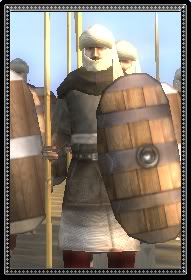
|
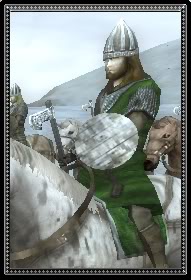
|
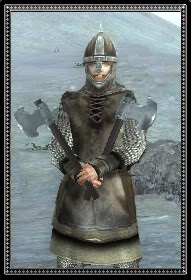
|
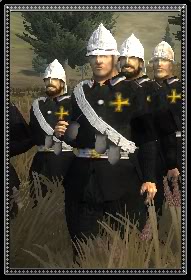
|
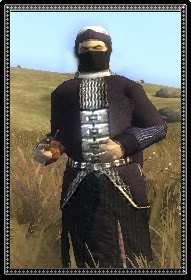
|
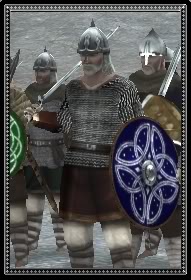
|
Included sub mods
Thera contains a wide variety of commendable sub-mods
- Otherworld map provided by Gundug
- Uruk Hai, Armoured sergants, Mailed Knights, Mongols & 1066 models by Lord Condormanius
- Norse Raiders by Matherlandia
- Faction leaders mod by Barser
- Templar Knights mod by Lord_Calidor
- Greek Hoplites by Prof
- CAI (tweaked ) and BAI by Lusted
- Blood Mod (tweaked) by Magus
- Names project (tweaked) by Finney
- Ancillaries and traits (tweaked) by Rawghi
- Teutonic Generals by Rex Colbalt
- General skins and models Tyre
- Mongol shamen skin by Ceasar Clivius
- Stratmap castles mod by Agart
- Early generals mod by Plasticfigurine
- Redjacket Skins by Jingle_Bombs
- Contributing faction stories/events by Borissomeone
- Hirdmen model by Viikingr
- Public release BC models by Alpha Delta
- Warlord model by Ataegina
Thera Manual
Players can utilize this excellent manual to learn and dominate Thera Download Link
Developers
- Mod Leader/Coder/skinner - TheFirstONeill
- Coder - Aduellist
- 2d art - Tzar
- Modeller/Aninmations - Eothese
- V1&V2 Modeller/Skinner - Caki

